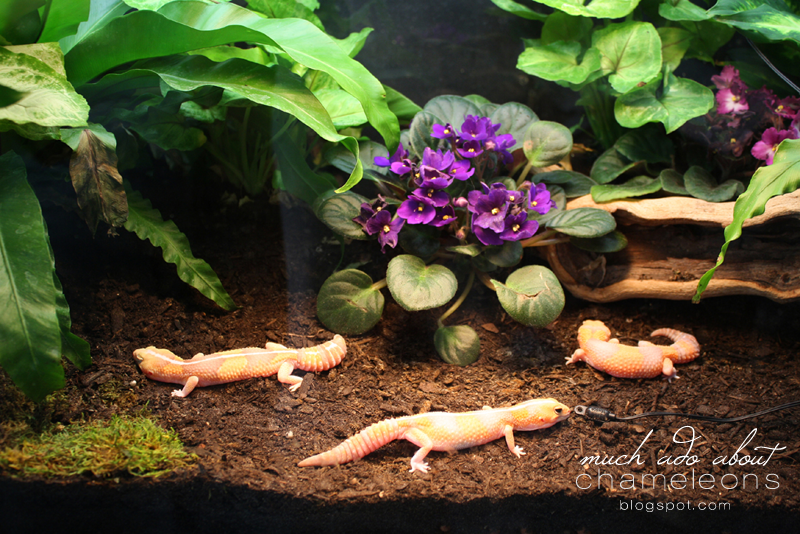The Ultimate Guide to Bioactive Bearded Dragon Care
Introduction
Are you tired of traditional bearded dragon care? Want to provide your pet with a more naturalistic environment? Bioactive bearded dragon care might be the solution for you! In this ultimate guide, we will walk you through everything you need to know about bioactive bearded dragon care, including what it is, its benefits, and how to create a naturalistic enclosure for your pet.
What is Bioactive Bearded Dragon Care?
Bioactive bearded dragon care is a naturalistic approach to reptile keeping. It involves creating a self-sustaining ecosystem of live plants, beneficial microorganisms, and small invertebrates like isopods and springtails, along with your bearded dragon. Instead of relying on artificial substrates and decorations, bioactive vivariums mimic the bearded dragon’s natural environment, promoting their wellness and reducing stress levels.

Benefits of Bioactive Bearded Dragon Care
With bioactive bearded dragon care, you can enjoy numerous benefits for both you and your pet. Below, we list a few of them:
- Promote natural behaviors in your pet, such as burrowing and foraging
- Reduce the risk of infections and illness
- Enhance the beauty of your home with a naturalistic enclosure
- Lessen the frequency of enclosure maintenance
- Continue to build a sustainable environment.
Creating a Bioactive Bearded Dragon Enclosure
Creating a bioactive vivarium for your bearded dragon may seem intimidating, but don’t worry! We will guide you through the process step by step. Before starting, you should have a clear understanding of the essential components of a bioactive vivarium. They include:
- A substrate mix, which consists of a layer of soil and leaf litter
- Live plants, which can be terrestrial or arboreal, depending on your enclosure’s setup
- Small invertebrates like isopods and springtails, which decompose organic material and improve soil health
- A heat source and basking spot to regulate the temperature
- A UVB light source to promote vitamin D synthesis for bone health
- A hide or shelter where your bearded dragon can rest
- A water source, which can be a shallow dish or a waterfall
Step 1: Choosing the Right Enclosure
The first step in creating a bioactive bearded dragon enclosure is selecting the right vivarium for your pet. Bearded dragons require a spacious enclosure to move around and bask, so choose an enclosure that’s at least 40 gallons or larger. Your enclosure can be a terrarium or a custom-built vivarium, depending on your preference and budget.
Step 2: Preparing the Substrate Mix
The substrate mix is the foundation of your bioactive bearded dragon enclosure. It should consist of about 2-3 inches of organic soil, mixed with leaf litter and other organic materials. The substrate mix should be moist and not too compacted, as it permits beneficial microorganisms to thrive and your bearded dragon to burrow.
Step 3: Adding Live Plants and Decorations
Next, you should add live plants and decorations to your enclosure. They provide shelter, climbing opportunities, and other benefits to your bearded dragon. Live plants suitable for bioactive enclosures include spider plants, snake plants, bromeliads, and pothos plants. Avoid plants like succulents and cacti, as they can be poisonous to your bearded dragon.

Step 4: Introducing Invertebrates
Once the substrate mix and live plants are added, it’s time to introduce small invertebrates like isopods and springtails. They help decompose organic matter, leading to a naturalistic and sustainable ecosystem. You can purchase them online or from your local pet store.
Step 5: Setting up the Lighting and Heating
Bearded dragons require specific lighting and heating conditions to thrive. For lighting, they need a UVB source, which should replace every 6-12 months to ensure proper function. In terms of heating, basking spots should be maintained at 105-110°F, with ambient temperatures ranging from 75-85°F.
Step 6: Adding Water Features
You can add a water dish or a waterfall to your enclosure to promote hydration and create a more naturalistic environment. Make sure the water is dechlorinated, and change the water frequently to prevent bacterial growth.
Maintaining a Bioactive Bearded Dragon Enclosure
Bioactive vivariums require less maintenance compared to traditional enclosures. However, they still require some upkeep to ensure your bearded dragon’s health and wellbeing. Below, we list a few of the maintenance tasks:
- Check the temperature and humidity levels every day
- Change the water in the dish regularly
- Trim and prune the plants to prevent overgrowth
- Replace the UVB light source every 6-12 months
- Spot-clean your enclosure regularly, removing any leftover food or waste
- Provide fresh food and water daily
- Monitor your bearded dragon’s health and behavior regularly.
Conclusion
In conclusion, bioactive bearded dragon care is an excellent way to provide your pet with a more naturalistic environment. It involves creating a self-sustaining ecosystem of live plants, invertebrates, and your bearded dragon, which mimics their natural habitat. By following the steps outlined above, you can create a beautiful, healthy, and safe home for your bearded dragon.
